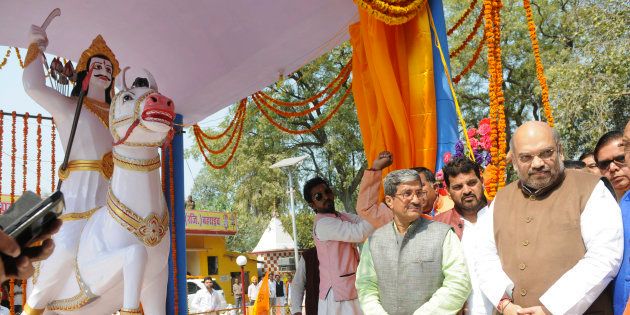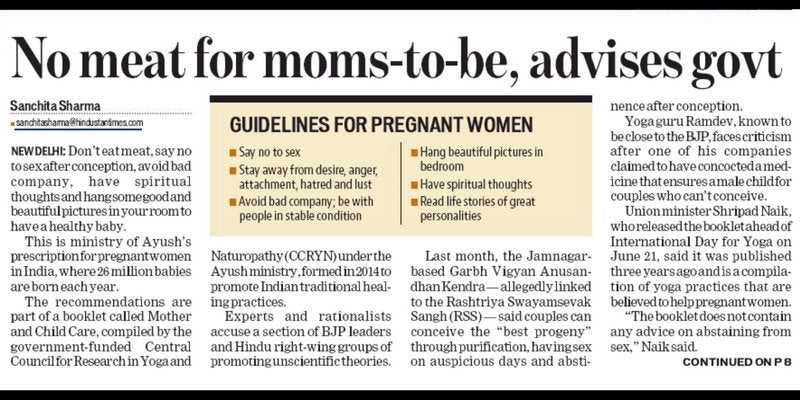
None of the speculation around the BJP's pick for India's top job came true, but many got the drift right. It was widely speculated that Modi's choice for President would be a Dalit or an Adivasi. Bihar Governor Ram Nath Kovind, a Dalit from Kanpur, has been chosen.
It is obvious that a Dalit has been picked keeping in mind the BJP's need to woo the Dalit vote for 2019. A Dalit from UP, Governor of Bihar: the eye is on the Dalit vote in these two states in particular. Kovind won't be India's first Dalit Rashtrapati but his nomination nevertheless is an important signal by the BJP towards Dalit voters, who have much to be unhappy about, including Rohith Vemula's suicide, the lynchings of Dalits by cow vigilantes in Gujarat and the recent Thakur-Dalit violence in Saharnpur in western Uttar Pradesh.
The New BJP
But it is more than that. This is part of the BJP's wider effort to woo the lower castes and the poor, shedding its image as a Brahmin-Baniya party. The process began with the announcement of Narendra Modi for the prime minister's job. The Modi campaign was able to woo OBC voters by subtly hinting that Mr Modi was himself from an OBC community.
The second big push for this strategy came with demonetisation, which targeted the poor and seemingly hurt the rich. The rich — especially the north Indian Baniya community — have been the BJP's core constituency. And the poor also happen to be lower castes: Dalits, adivasis and OBC communities. Demonetisation, for all its economic failure, has helped attract the lower castes to the BJP through Modi's targeting of class.
The nomination of Kovind should be seen in this light. The BJP won Uttar Pradesh mainly on the back of non-Yadav OBC votes, but made a Thakur, Yogi Adityanath, née Ajay Singh Bisht, the chief minister. A Thakur chief minister would upset Brahmins, so a Brahmin, Dinesh Sharma, was made deputy chief minister. However, the 30 plus per cent non-Yadav voters who voted for the BJP en masse also had to be represented, so an OBC, Keshav Prasad Maurya, was also made deputy chief minister.
That left out an important constituency, non-Jatav Dalits, i.e., Dalits who are not the same caste as Mayawati's. That has now been addressed by making a Dalit from Kanpur the Presidential nominee.
Such precarious balancing tells you, for one, that caste remains the most important determinant of Indian politics. If the Modi regime were not doing this balancing act among Hindu castes, Hindutva alone wouldn't take it too far. If Adityanath's selection for the job of UP chief minister signalled Hindutva, Kovind's selection is a choice borne out of caste compulsions.
It also corrects the caste imbalance amongst political appointees in the Modi government. Modi's council of ministers has the largest number of upper castes ever. Only 4.6% ministers are Dalits, a community with 16.6% population. Moreover, the upper castes in the Modi cabinet are mostly cabinet ministers, and the OBCs mostly ministers of state – balanced by the fact the prime minister is from an OBC community himself.
Yet the task of balancing Hindu caste communities is so difficult, even Modi and Amit Shah's ace handling of it gives the opposition opportunities to exploit.
Of Brahmins and Banias
The BJP's recasting of its image from a Brahmin-Bania party to a party of Dalits and lower OBCs provides the opposition the most obvious opportunity of targeting Brahmins, Banias and other upper castes.
Banias — or anyone who's into business regardless of caste — particularly feel they are getting a raw deal. The BJP can afford to ignore and alienate them because they are very small in numbers – at most 5% in Uttar Pradesh for instance. Yet for all opposition parties who are seeing falling vote-shares, this is a big opportunity, not least because the trading community also brings financial support. Affected first by demonetisation and now by the transitional pain of the Goods and Services Tax, the community is ripe for political targeting by other parties.
Brahmins in Uttar Pradesh and beyond have long felt unhappy the BJP hasn't replaced Atal Bihari Vajpayee with a Brahmin leader of his stature. Its tallest leader in Uttar Pradesh used to be Rajnath Singh, and now it is Yogi Adityanath, both Thakurs. They are therefor another community whose disenchantment with the BJP could be exploited.
This is why the BJP might make an upper caste the Vice President, or it could be an adivasi given the BJP also wants to target them. Nevertheless, making a Dalit the President is a reminder the BJP has a major problem at hand with the Dalit vote. Is making a Dalit President going to be enough to assuage Dalit disaffection with the BJP? Not really. That makes the Dalit vote very much open to electoral contestation.
As much is clear – the BJP has aced the caste game and the opposition can't rise without matching it.
Also in HuffPost:
